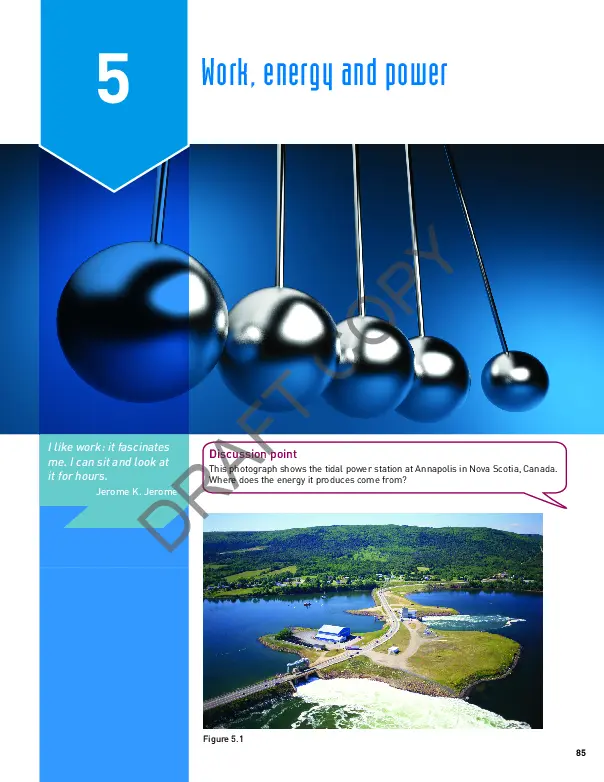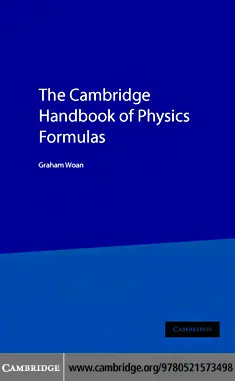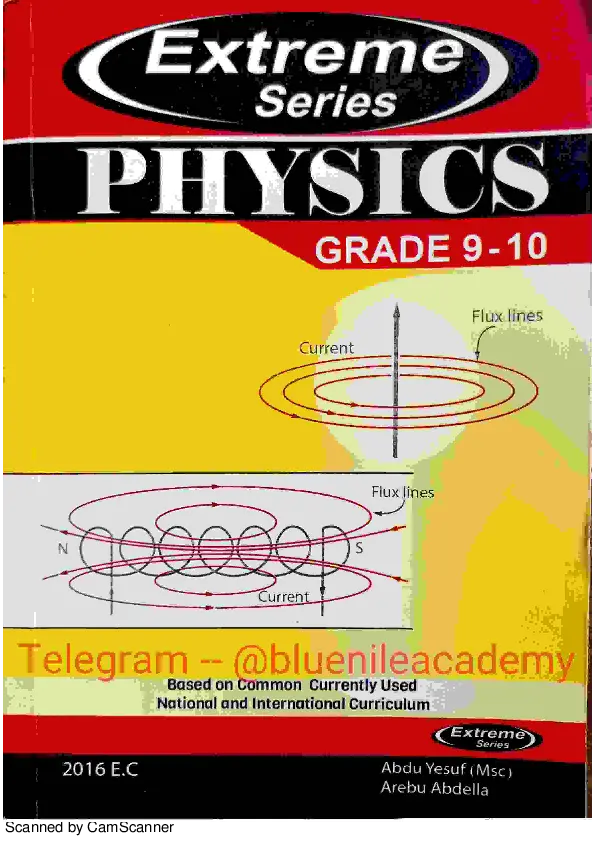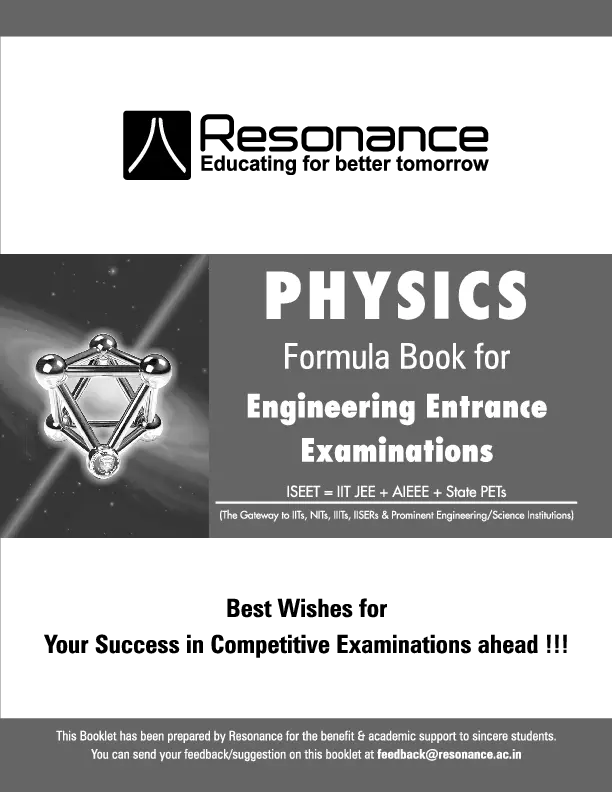WORK, ENERGY AND POWER

Book Description
1 energy and momentum When describing the motion of objects in everyday language the words energy and momentum are often used quite loosely and sometimes no distinction is made between them.
In mechanics they must be defined precisely. For an object of mass m moving with velocity v: ● v is the speed, the magnitude of the velocity ● Kinetic energy = 1 2 mv 2 (this is the energy it has due to its motion) ● v = v. ● Momentum = mv Notice that kinetic energy is a scalar quantity with magnitude only, but momentum is a vector in the same direction as the velocity. Both the kinetic energy and the momentum are liable to change when a force acts on a body and you will learn more about how the energy is changed in this chapter.
You will meet momentum again in Chapter 6.
2 Work and energy In everyday life you encounter many forms of energy such as heat, light, electricity and sound.
You are familiar with the conversion of one form of energy to another: from chemical energy stored in wood to heat energy when you burn it; from electrical energy to the energy of a train’s motion, and so on.
The S.I.
unit for energy is the joule, J. Mechanical energy and work In mechanics, two forms of energy are particularly important. ● ● Kinetic energy is the energy which a body possesses because of its motion. ● ● The kinetic energy of a moving object = ● 1 2 × mass × (speed)2. ● Potential energy is the energy which a body possesses because of its position.
It may be thought of as stored energy which can be converted into kinetic energy or other forms of energy.
You will meet this again later in this chapter. ● ● The energy of an object is usually changed when it is acted on by a force.
When a force is applied to an object which moves in the direction of its line of action, the force is said to do work. The work done by a constant force = force × distance moved in the direction of the force. The following examples illustrate how to use these ideas.
Example 5.1 A brick, initially at rest, is raised by a force averaging 40 N to a height of 5 m above the ground, where it is left stationary.
How much work is done by the force.
Courses
Engineering, PhysicsReview Posted!
Add your details below to get email notifications when someone replies to your review.
Delete Comment?
This action cannot be undone. Are you sure?
Login
Still looking for something else?
Try this Advanced search Enhanced by Google
 Exotic Ai
Exotic Ai












Comment Section (0)
No reviews yet. Be the first!